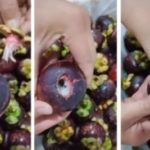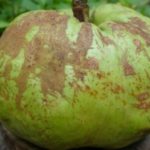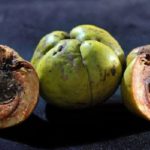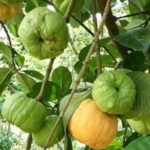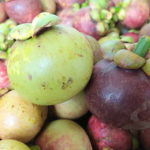Mangosteen is one of the most popular fruits today due to its unique fragrance and sweet and sour taste that strongly stimulates the taste buds. However, many people are curious about where and when this fruit is grown and harvested. So, today, let’s explore the answers to these questions and learn more about this fascinating fruit.
1 What is Mangosteen and Where is it Grown?
Characteristics of the Mangosteen Tree
Mangosteen, with the scientific name Garcinia mangostana L, belongs to the Guttiferae family. It is a tropical fruit tree commonly cultivated in countries such as Thailand, Indonesia, and Vietnam.
With its unique sweet and sour taste and delicate texture, mangosteen is now also grown in other Southeast Asian countries, including Sri Lanka, Myanmar, the Philippines, and India.
In Vietnam, mangosteen is predominantly grown in the Southern region, the Southeast region, and the Mekong Delta.
Classification of Mangosteen
There are several varieties of mangosteen, each with its own unique shape and flavor. In Vietnam, the two most well-known types are the Lai Thieu Mangosteen (from Binh Duong province) and the imported Thai Mangosteen.
- Lai Thieu Mangosteen has a large stem, a round shape, a dark purple peel, and an appealing sweet and sour taste.
- Thai Mangosteen has a smaller but longer stem, an orange-brown peel, a sweeter taste, and softer flesh, making it easier to chew and swallow.
If you want to indulge in the best-tasting Lai Thieu mangosteen, head to Thanh Tuyen commune in Dau Tieng district of Binh Duong province. The favorable soil and climate conditions in this area produce mangosteens with an exceptional fragrance, juicy flesh, a delicate sweet taste, and a crisp texture.
 What is Mangosteen and Where is it Grown?
What is Mangosteen and Where is it Grown?
2 When is Mangosteen Season?
The mangosteen season typically starts from April to June, and the ripening time can vary depending on the yearly weather conditions. However, the fruit reaches its peak of perfection and flavor around mid-June. This is when the mangosteens turn a reddish-orange color, become round and full, and attain the perfect balance of sweetness and quality.
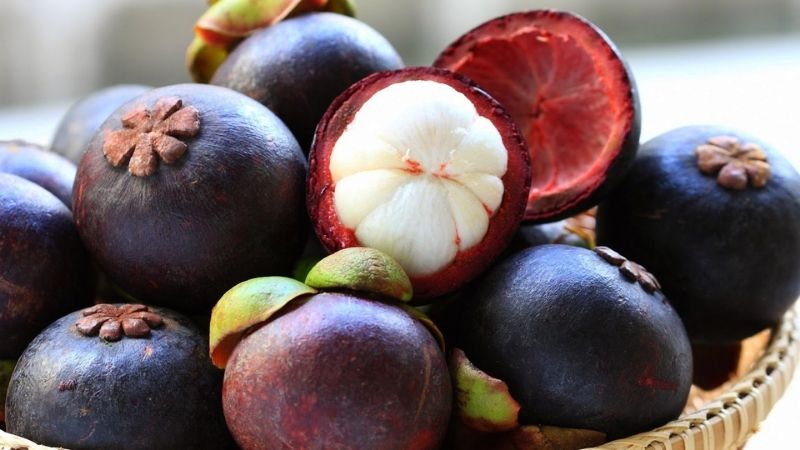 Mangosteen Season is from April to June
Mangosteen Season is from April to June
3 Mangosteen Cultivation Techniques
The mangosteen tree is a long-lived perennial that holds significant economic value. In terms of feng shui, having a mangosteen tree in your front yard is considered auspicious, bringing vibrant energy to your home.
Planting Techniques
Garden Design: Design the garden with contour lines to facilitate planting, care, and harvesting. Depending on the garden’s scale, design a windbreak garden accordingly. The recommended planting density is 10mx10m, equivalent to 100 trees/ha.
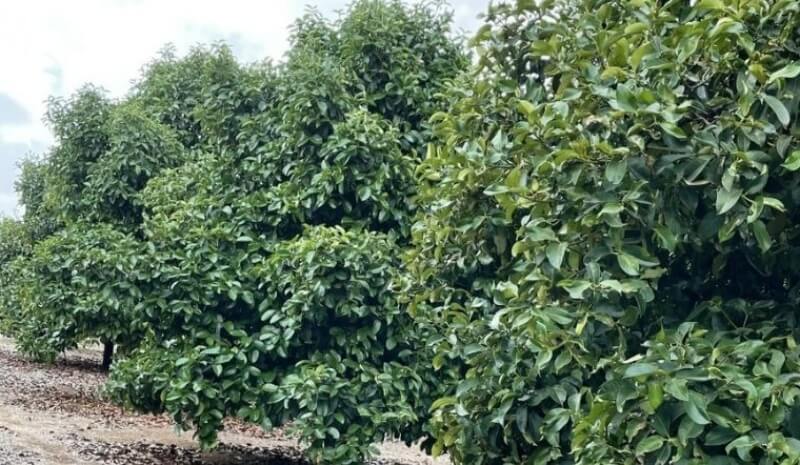 Garden Design
Garden Design
Pit Digging Technique: The pit size should be 60cmx60cmx60cm. During the digging process, separate the subsoil from the topsoil to avoid mixing. Then, mix 20kg of well-decomposed organic fertilizer with the topsoil and place it in the pit, using the subsoil to fill the top. Apply 0.5-1kg of lime, 100-200 grams of NPK, and 10-20kg of well-decomposed organic fertilizer. Mix it evenly with the soil and water it to maintain moisture. Wait for 20-30 days before planting to give the tree the best conditions to grow and enhance its resistance to pests and diseases.
Note: The pit should be prepared at least 20-30 days in advance before planting.
 Pit Digging Technique
Pit Digging Technique
Fertilization Technique:
For Young Trees:
- Well-decomposed organic fertilizer: 10-15kg/year.
- Inorganic fertilizer: In the first year, apply 0.5kg/tree with an N:P:K ratio of 15:15:15. In subsequent years, increase the amount to 1kg/tree/year.
- Apply fertilizer 2-4 times a year.
For Trees After Harvest (From the 10th Year):
- 1st Application (After Harvest): NPK 20-5-6 with 20-30kg/tree of well-decomposed organic fertilizer.
- 2nd Application (30-40 Days Before Flowering): NPK 20-20-15, apply 1-2 kg/tree.
- 3rd Application (After Fruit Setting): NPK 17-7-21, apply 2-3kg/tree.
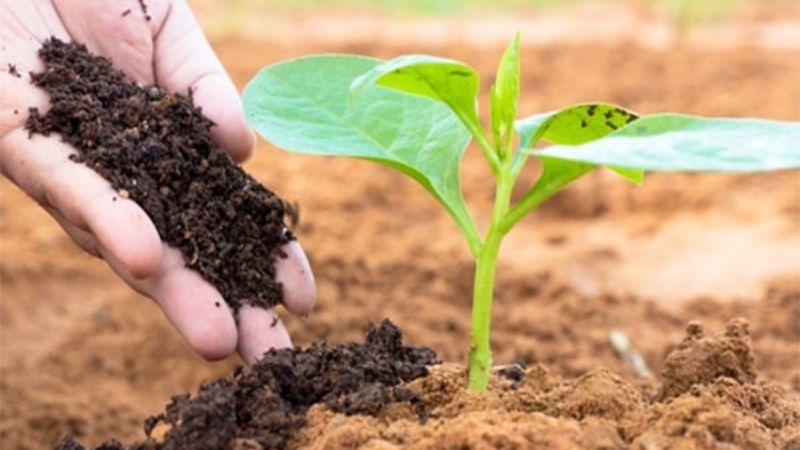 Fertilization Technique
Fertilization Technique
Care Techniques
Watering: For young mangosteen trees, adequate watering is crucial, especially during the dry months, to ensure the tree’s health and promote growth. Insufficient water can lead to wilting and stunted growth.
During the flowering and fruiting stages, the tree requires a dry period of about 15-20 days before flowering. When the fruits are growing rapidly, maintain a high humidity level of 70-90%. Insufficient water during this period can cause fruit drop, reduced quality, and lower yields.
As the fruits approach maturity, reduce the humidity to around 50-60%. Higher humidity can negatively affect the fruit’s quality and ripening process.
 Care Techniques
Care Techniques
How Long Until the Tree Bears Fruit?
Mangosteen trees grown from seeds typically bear fruit when they are 8-10 years old or older, depending on the care they receive.
To encourage earlier fruiting, grafting is a common practice, and trees can start bearing fruit as early as 4-5 years of age with proper care. The yield of mangosteen trees can vary depending on the climate and the age of the tree. A young tree may produce 200-300 fruits in its first fruiting, while a mature tree can yield an average of 500 fruits per season.
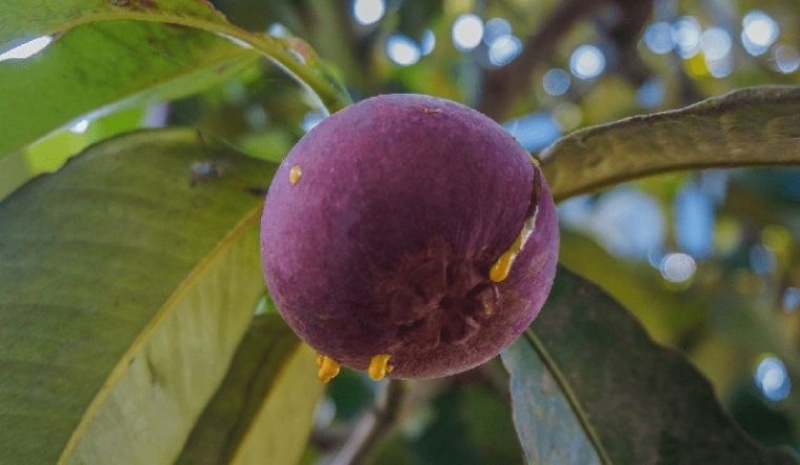 Mangosteen Trees Bear Fruit After 8-10 Years
Mangosteen Trees Bear Fruit After 8-10 Years
4 Price of Mangosteen per kg
The price of mangosteen varies depending on the season and market demand. Typically, the price ranges from VND 35,000 to VND 95,000 per kg.
 Price of Mangosteen per kg
Price of Mangosteen per kg
5 Where to Buy Mangosteen
As mangosteen is a popular and beloved fruit, it is widely available in markets, supermarkets, and fruit shops across the country.
Additionally, you can order online or purchase directly from our stores, where we offer high-quality mangosteens at reasonable prices.
We hope that through this concise article, we have provided you with valuable knowledge about mangosteen.
The Ultimate Hack to Peel a Mangosteen in a Flash, No Knife Needed!
Introducing a revolutionary method to peel mangosteen that is not only swift but also incredibly convenient – say goodbye to knives and hello to ease! This technique is a game-changer for those who want to enjoy the delicious fruit without the hassle and mess of using a knife. With this innovative approach, you can effortlessly peel away the tough exterior and reveal the juicy, flavorful segments within. It’s time to elevate your mangosteen experience!
The Ultimate Guide to Choosing the Sweetest Mangosteen: 10 Out of 10 Perfection
July and August mark the season for the delectable Mangosteen fruit. This tropical delight is not only a nutritional powerhouse but also a beauty ally. We’re here to let you in on a little secret: with our expert tips, you’ll be able to select the juiciest and most flavorful mangosteens, ensuring every bite is a burst of freshness. Say goodbye to the worry of picking less-than-perfect fruits!

























